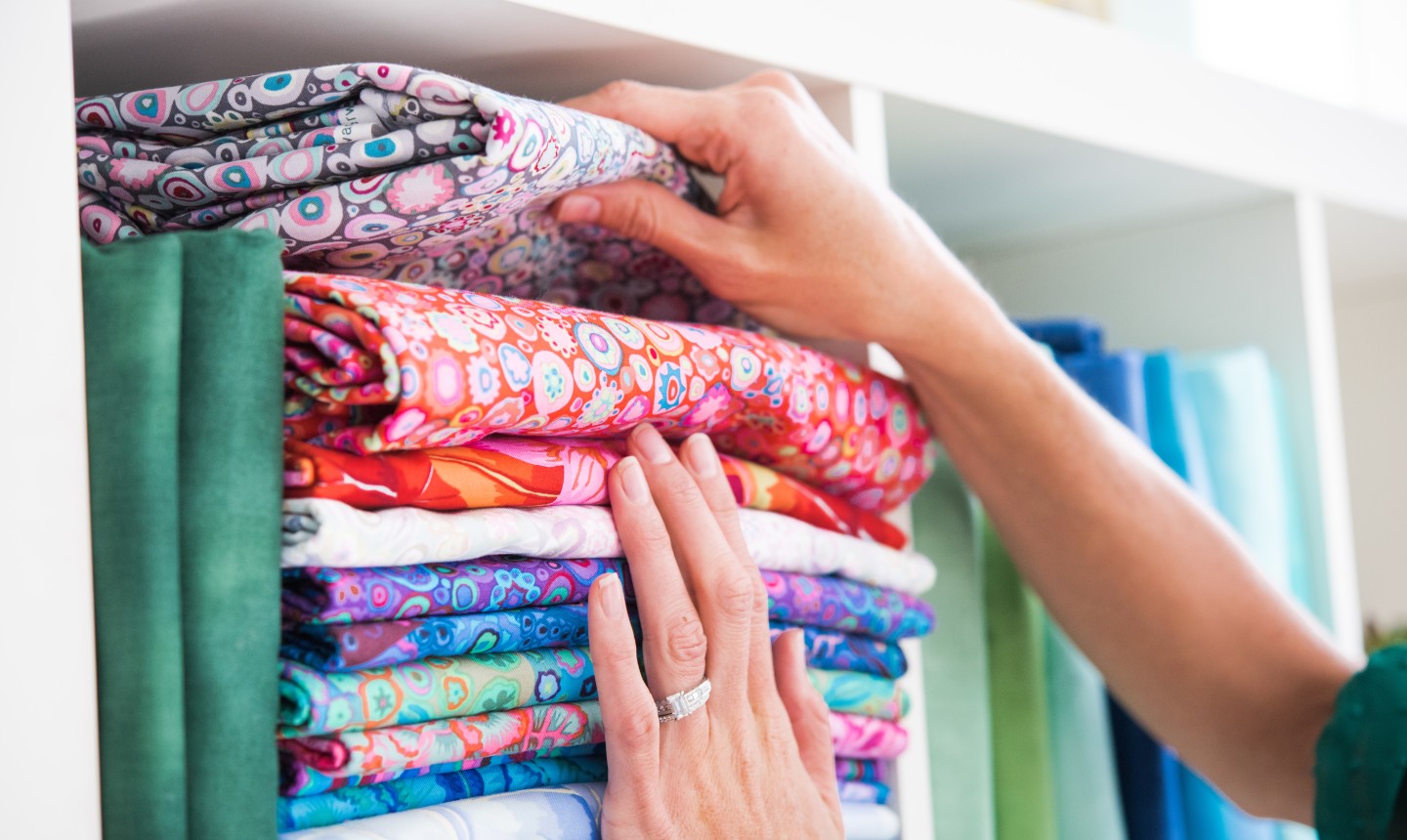

Articles
What To Use For Quilt Backing
Modified: August 22, 2024
Discover the best articles to use for quilt backing and enhance the longevity of your quilts. Find expert tips and recommendations for choosing the perfect backing materials.
(Many of the links in this article redirect to a specific reviewed product. Your purchase of these products through affiliate links helps to generate commission for Storables.com, at no extra cost. Learn more)
Introduction
When it comes to quilting, the focus is often on the beautiful pieced top of the quilt. However, the backing fabric plays an equally important role in the overall finished product. The quilt backing not only provides stability and support to the quilt, but it also contributes to its overall visual appeal.
Choosing the right quilt backing is essential for ensuring that your quilt is sturdy, durable, and visually pleasing. There are several factors to consider when selecting the backing fabric, including the type of fabric, its preparation, sizing and piecing requirements, and its suitability for different quilt styles.
In this article, we will explore the various factors to consider when choosing quilt backing, and provide guidance on selecting the best options for different types of quilts. Whether you are a seasoned quilter or a beginner, understanding the importance of quilt backing will help you create stunning and long-lasting quilts.
Key Takeaways:
- Choose quilt backing fabric that complements your quilt style and theme, balancing aesthetics with functionality for a visually stunning and durable finished product.
- Prioritize fabric quality, preparation, and practical considerations to ensure a long-lasting quilt that reflects your personal style and withstands the test of time.
Read more: How To Bind A Quilt Using The Backing
Factors to Consider for Quilt Backing
When it comes to choosing the perfect quilt backing, there are several factors that you should take into consideration. These factors will ensure that your quilt is not only visually appealing, but also durable and long-lasting. Let’s take a closer look at these important considerations:
- Fabric Options: The first thing to consider is the type of fabric you want to use for the backing. There are various options available, such as cotton, flannel, minky, and satin. Each fabric has its own characteristics and benefits, so it’s important to choose one that suits your specific needs and preferences. Cotton is a popular choice for quilt backing due to its breathability and durability.
- Preparing the Backing Fabric: Before using the fabric for backing, it’s important to prewash and press it to ensure that it won’t shrink or bleed color when the quilt is washed. This step will help prevent any unwanted surprises once the quilt is finished.
- Sizing and Piecing the Backing Fabric: Quilt backing fabric is typically wider than the quilt top to allow for the quilting process. If your quilt is wider than the standard fabric width, you will need to piece the backing fabric together. Take care to align the seams properly and use a ¼ inch seam allowance for a secure fit.
- Choosing Backing Fabric for Different Quilt Styles: The style of your quilt may influence the type of backing fabric you choose. For traditional quilts, a solid or tone-on-tone fabric can complement the quilt top nicely. On the other hand, modern quilts may benefit from bold prints or contrasting colors for a contemporary look.
- Considerations for Quilted Bedspreads: If you’re making a quilted bedspread, you’ll want to select a backing fabric that is comfortable against the skin and durable enough to withstand regular use and washing. Consider using a soft and breathable fabric, such as cotton or flannel, for maximum comfort.
- Quilt Backing for Wall Hangings and Decorative Quilts: Wall hangings and decorative quilts are typically not subjected to the same wear and tear as bedspreads. Consequently, you have more freedom to experiment with decorative and unconventional backing fabrics, such as silk or velvet, to add an extra touch of luxury and elegance.
- Backing Fabric for Quilted Table Runners and Placemats: For quilted table runners and placemats, it’s important to choose a backing fabric that is not only visually appealing but also easy to clean and resistant to spills. Consider using a fabric with a stain-resistant finish or opt for a laminated cotton fabric that can be easily wiped clean.
- Durability and Longevity of Quilt Backing: Quilts are meant to be cherished and passed down through generations, so it’s important to choose a backing fabric that will stand the test of time. Look for high-quality fabrics and consider using a stronger thread for the quilting process to ensure that your quilt can withstand regular use and washing.
- Balancing Aesthetics with Functionality: While the visual appeal of the quilt backing is important, it’s equally important to consider its functionality. Balance the aesthetic qualities of the fabric with its durability, ease of care, and practicality for the intended use of the quilt.
By carefully considering these factors and selecting the appropriate quilt backing, you can ensure that your quilt is not only visually stunning but also durable and built to last for years to come.
Fabric Options
When it comes to choosing the fabric for quilt backing, there are several options to consider. Each fabric has its own unique characteristics, benefits, and considerations. Let’s explore some of the most popular fabric options for quilt backing:
- Cotton: Cotton is a classic and versatile choice for quilt backing. It is breathable, lightweight, and easy to work with. Cotton fabrics come in a wide range of prints and solids, allowing you to find the perfect match for your quilt. Additionally, cotton is known for its durability, making it a great option for quilts that will be frequently used and washed.
- Flannel: Flannel is a popular choice for quilt backings, particularly for projects that require extra warmth and coziness. Flannel is soft, fuzzy, and has a brushed finish that enhances its warmth. It is particularly suitable for quilts intended for colder climates or for use during the winter months.
- Minky: Minky is a luxurious and ultra-soft fabric that adds a touch of plushness to quilt backings. It has a velvety texture and provides a cozy feel. Minky is perfect for baby quilts or quilts meant for snuggling up on the couch. However, it is important to note that minky can be a bit more challenging to work with due to its stretchiness and pile.
- Satin: Satin is a silky and shiny fabric that adds an element of elegance to quilt backings. It is often used for decorative or special occasion quilts. Satin can be a bit slippery and delicate, so extra care should be taken when handling and quilting it.
- Batik: Batik fabrics are hand-dyed and often feature intricate designs and vibrant colors. They create a unique and exotic look for quilt backings. Batik fabrics have a high thread count, making them durable and long-lasting.
- Backing Panels: Another option for quilt backings is to use pre-printed backing panels. These panels are specially designed to cover the entire quilt back with a single piece of fabric. They often feature elaborate designs or scenic landscapes, making them an easy and visually stunning choice for quilt backs.
When selecting the fabric for your quilt backing, consider the intended use of the quilt, the style and theme of your quilt top, and your personal preferences. It’s important to find a fabric that not only complements the overall aesthetic of your quilt but also provides the desired level of functionality and durability.
Remember to prewash and press your backing fabric before assembling your quilt to ensure that it won’t shrink or bleed color when it’s washed. This step will help prevent any unwanted surprises once the quilt is finished.
Preparing the Backing Fabric
Before using the fabric for quilt backing, it’s important to properly prepare it to ensure the best results. Here are some key steps to take when preparing the backing fabric:
- Prewashing: It is recommended to prewash the backing fabric before using it for quilting. This step helps to remove any chemicals, dirt, or excess dye that may be present in the fabric. Prewashing also helps to prevent the fabric from shrinking or bleeding color after the quilt is finished. Follow the fabric manufacturer’s instructions for prewashing, including the use of mild detergent and appropriate water temperature.
- Pressing: After prewashing, it’s important to press the fabric to remove any wrinkles or creases. Use an iron on the appropriate setting for the fabric type to ensure a smooth and flat surface. Pressing the fabric will make it easier to work with and create a neater finished quilt.
- Trimming: Once the fabric is prewashed and pressed, trim the edges to ensure they are straight and even. This will make it easier to align and piece the backing fabric if necessary. Using a clear ruler and rotary cutter can help achieve precise and clean cuts.
- Seam Allowance: When piecing together multiple pieces of fabric for a larger backing, it’s important to use a consistent seam allowance. A ¼ inch seam allowance is commonly used in quilting. Be sure to align the fabric pieces accurately and securely pin them together before sewing the seams.
- Directional Prints: If your backing fabric features a directional print (e.g., stripes or motifs), take care to align the print correctly. Pay attention to the orientation of the print and ensure it is facing the desired direction when sewing the fabric pieces together. This will help achieve a visually pleasing and cohesive quilt design.
Properly preparing the backing fabric ensures that it is clean, wrinkle-free, and ready for quilting. Taking these extra steps at the beginning will help prevent any issues or surprises during the quilting process or after the quilt is completed.
By prewashing, pressing, trimming, and aligning the fabric correctly, you will have a smooth and professional-looking quilt backing, ensuring the overall quality and longevity of your quilt.
Sizing and Piecing the Backing Fabric
The sizing and piecing of the backing fabric are crucial steps in ensuring the proper fit and stability of your quilt. Here are some important considerations to keep in mind when sizing and piecing the backing fabric:
- Width: Quilt backing fabric is typically wider than the quilt top to allow for the quilting process. The standard width for quilt backing fabric is around 42 to 44 inches. However, if your quilt top is wider than this, you will need to piece the backing fabric together to achieve the necessary width. Measure the width of your quilt top and add several inches to ensure enough fabric to cover the edges and allow for quilting.
- Length: The length of the backing fabric should be longer than the quilt top to provide enough fabric for attaching to the quilt frame or machine quilting. Add several inches to the length of your quilt top to ensure sufficient fabric for securing the quilt edges. If needed, join multiple lengths of fabric to achieve the desired length, ensuring that the seams are secure and aligned properly.
- Seam Alignment: When piecing together multiple pieces of fabric for the backing, it’s important to align the seams correctly. Use clear rulers and straight pins or fabric clips to ensure that the seams are aligned accurately before sewing. Press the seams open or to one side, as per your preference, to reduce bulk and create a smoother surface for quilting.
- Seam Allowance: Use a ¼ inch seam allowance when sewing the fabric pieces together. This is a standard seam allowance in quilting and ensures a secure and durable seam. Remember to backstitch at the beginning and end of each seam to reinforce the stitching and prevent unraveling.
- Pressing Seams: After sewing the seams, press them open or to one side. Pressing the seams not only creates a neater appearance but also helps to reduce bulk when layering the quilt top, batting, and backing fabric for quilting.
When sizing and piecing the backing fabric, accuracy and attention to detail are key. Properly measuring, aligning, and joining the fabric pieces will result in a well-fitted and stable backing for your quilt.
Remember to consider the pattern, design, and orientation of any prints or motifs on the backing fabric to ensure a visually pleasing and cohesive overall look. Take the time to carefully plan and execute these steps, as they will contribute to the successful creation of your quilt.
Read more: How To Cut Backing For A Quilt
Choosing Backing Fabric for Different Quilt Styles
When it comes to quilt backing, the fabric you choose can greatly impact the overall style and aesthetic of your quilt. Here are some considerations to keep in mind when selecting backing fabric for different quilt styles:
- Traditional Quilts: For traditional quilts, a solid or tone-on-tone fabric can complement the quilt top nicely. These fabrics provide a subtle and classic backdrop that allows the intricate piecing or appliqué work of the quilt top to shine. Consider choosing a fabric color that coordinates with the dominant colors in your quilt top.
- Modern Quilts: Modern quilts often feature bold colors, geometric shapes, and minimalist designs. When choosing backing fabric for a modern quilt, you have the flexibility to experiment with prints and patterns. Consider selecting a fabric with bold prints, contrasting colors, or even a solid color that provides a striking contrast to the quilt top.
- Vintage Quilts: Vintage quilts evoke a sense of nostalgia and often feature delicate or traditional prints. When choosing backing fabric for a vintage quilt, consider fabrics with a vintage look or feel, such as reproduction prints or fabrics with a faded or aged appearance. These fabrics can enhance the nostalgic charm of the quilt.
- Art Quilts: Art quilts are often created as a form of self-expression and can incorporate a wide range of techniques and materials. When choosing backing fabric for an art quilt, consider selecting a fabric that complements or enhances the theme or message of the quilt. You can experiment with unconventional fabrics, such as metallic, textured, or hand-painted fabrics, to add a unique touch to your art quilt.
- Theme-based Quilts: If your quilt has a specific theme, such as nature, animals, or seasonal motifs, consider selecting backing fabric that matches or coordinates with the theme. Look for fabrics that feature elements related to your theme or fabrics with appropriate colors and patterns. This will create a cohesive and visually appealing quilt.
- Children’s Quilts: Quilts made for children can be vibrant, playful, and whimsical. When selecting backing fabric for a children’s quilt, consider fabrics with fun prints, bright colors, or motifs that children will love. Fabrics featuring animals, cartoons, or playful patterns can add an extra touch of charm to the quilt.
When choosing backing fabric, it’s important to consider the overall aesthetic and style you want to achieve for your quilt. The fabric should complement the quilt top and enhance its visual appeal. Consider the colors, patterns, and theme of your quilt when exploring your options for backing fabric.
Remember to also take into account the durability and quality of the fabric. Quilts are meant to be used and cherished for a long time, so choose a backing fabric that is well-made and can withstand regular use and washing.
By selecting the right backing fabric for your quilt style, you can create a visually stunning and cohesive quilt that will delight and inspire for years to come.
Consider using a wide backing fabric to minimize the need for piecing. Alternatively, you can use a coordinating solid or print fabric for a unique backing design.
Considerations for Quilted Bedspreads
Quilted bedspreads not only add beauty and style to your bedroom but also provide warmth and comfort. When choosing the backing fabric for a quilted bedspread, there are several important considerations to keep in mind:
- Comfort: Bedspreads are meant to be used for sleeping or lounging, so it’s essential to choose a backing fabric that is comfortable against the skin. Cotton is a popular choice for bedspread backings due to its softness, breathability, and natural feel. Flannel is also a cozy option, providing extra warmth during colder months.
- Durability: Bedspreads are often subjected to regular use and washing, so it’s important to choose a backing fabric that can withstand frequent handling and laundering. Look for high-quality fabrics with a tight weave that can withstand wear and tear without losing their appearance or integrity.
- Ease of Care: Bedspreads can be challenging to clean, so selecting a backing fabric that is easy to care for is crucial. Opt for fabrics that are machine washable and can withstand regular laundering. Fabrics that don’t require special handling or dry cleaning will make caring for your bedspread much more convenient.
- Color and Design: Consider the color scheme and design of your bedroom when choosing the backing fabric for a bedspread. Solid colors or tone-on-tone prints can provide a classic and timeless look. If you prefer a more decorative or visually striking design, consider using patterned fabrics or fabrics with intricate motifs that complement your bedroom décor.
- Size and Fit: Ensure that the backing fabric is wide and long enough to cover the entire bed and provide a proper drape. Measure your bed and add a few extra inches to each side for an adequate overhang. If needed, piece together multiple lengths of fabric to achieve the desired width and length.
- Quilting Pattern: Consider how the quilting pattern on the bedspread will complement the backing fabric. Quilting adds texture and detail to the bedspread, so choose a backing fabric that will showcase the quilting design. Solid or lightly patterned fabrics are often chosen to highlight the quilted motifs.
- Seasonal Considerations: Depending on the climate and season, you may want to consider different types of backing fabric for your bedspread. For warmer months, lightweight and breathable cotton or blend fabrics are ideal. For colder months, flannel or heavier-weight fabrics can provide extra warmth and coziness.
When selecting the backing fabric for a quilted bedspread, prioritize comfort, durability, and ease of care. Choose a fabric that complements your bedroom décor and matches your sense of style. By considering these factors, you can create a beautiful and functional bedspread that enhances the overall ambiance of your bedroom.
Quilt Backing for Wall Hangings and Decorative Quilts
When creating wall hangings or decorative quilts, the choice of quilt backing fabric plays a significant role in enhancing the overall aesthetic appeal. Here are some considerations to keep in mind when selecting the backing fabric for these types of quilts:
- Design and Style: Wall hangings and decorative quilts are often intended to make a visual impact. Consider the design and style of your quilt when choosing the backing fabric. You can opt for solid colors, subtle prints, or even more elaborate patterns that complement or contrast with the quilt top. Take into account the overall theme or mood you want to evoke with your finished piece.
- Texture and Dimension: Consider choosing a backing fabric that adds texture and dimension to your wall hanging or decorative quilt. Fabrics with interesting textures, such as linen, velvet, or silk, can create a luxurious and visually appealing effect. You can also consider using embellishments like lace, embroidery, or appliqué to further enhance the texture and visual interest of the backing fabric.
- Coordinating with the Quilt Top: Your choice of backing fabric should complement and enhance the quilt top. Consider the color scheme, motifs, and patterns of the quilt top when selecting the backing fabric. Look for fabrics that coordinate with the colors used in the quilt top or fabrics that feature similar motifs or themes. This will create a cohesive and visually pleasing overall design.
- Hanging Considerations: Quilts intended for wall hangings need to have a secure and reliable method for hanging. Consider adding a hanging sleeve to the backing fabric, which allows for easy and seamless display on a wall. Ensure that the chosen backing fabric is sturdy enough to support the weight of the quilt and any additional hanging hardware or rods.
- Lightfastness: If your wall hanging or decorative quilt will be exposed to direct sunlight or long periods of light exposure, consider choosing a backing fabric that is lightfast. Fabrics that are lightfast will resist fading and maintain their colors and vibrancy over time, ensuring that your quilt remains visually stunning for years to come.
- Care and Maintenance: It’s important to choose a backing fabric that is easy to care for. Decorative quilts and wall hangings may not be subjected to the same amount of handling and laundering as bedspreads, but occasional cleaning may still be necessary. Opt for fabrics that are machine washable or can be spot-cleaned easily, ensuring that the quilt’s beauty is maintained with minimal effort.
When selecting the backing fabric for wall hangings and decorative quilts, take the opportunity to be creative and experiment with different textures, prints, and patterns. Consider the intended placement of the quilt and the desired visual impact it will have on the space. By carefully choosing the backing fabric, you can enhance the overall design and create a stunning piece of art.
Backing Fabric for Quilted Table Runners and Placemats
Table runners and placemats add a touch of style and elegance to your dining table. When creating quilted table runners and placemats, the choice of backing fabric is important not only for the visual appeal but also for practicality and ease of use. Here are some considerations to keep in mind when selecting backing fabric for these projects:
- Practicality: Table runners and placemats are often subjected to spills and messes during meals. Therefore, select a backing fabric that is easy to clean and resistant to stains. Consider using fabrics with a stain-resistant finish or opt for coated or laminated cotton fabrics that can be easily wiped clean with a damp cloth.
- Color and Style: Choose a backing fabric that complements your overall table décor and color scheme. Consider the style and theme of your dining area when selecting the fabric. Solid colors or subtle prints are often popular choices as they provide a timeless look that can coordinate with a variety of table settings.
- Texture: Texture can add visual interest and depth to your table runners and placemats. Consider using fabrics with interesting textures, such as linen, burlap, or textured cotton, for a unique and tactile experience. The texture can enhance the overall dining experience and make your table setting more inviting.
- Size and Fit: Ensure that the backing fabric is wide and long enough to cover the desired length and width of your table runner or placemat. Measure your table or refer to standard table sizes to determine the appropriate dimensions. Remember to account for any desired overhang or drop on the sides of the table.
- Quilting Pattern: Consider the quilting pattern you plan to incorporate into your table runner or placemat. The quilting can add texture and design to the fabric. Choose a backing fabric that will showcase the quilting pattern effectively. Solid or lightly patterned fabrics work well to highlight the quilting stitches and provide an appealing backdrop for your table setting.
- Heat Resistance: Table runners and placemats often come into contact with hot dishes and utensils. To protect your table and ensure safety, consider using a backing fabric that has heat-resistant properties or can withstand the heat of hot items without getting damaged or discolored. Insulated batting or double-layered fabrics can also be used for added heat resistance.
- Longevity: Table runners and placemats are frequently used in everyday dining or during special occasions. Choose a backing fabric that is durable and can withstand repeated use and washing. Fabrics with a tight weave and high-quality construction will maintain their appearance and functionality over time.
By carefully selecting the backing fabric for your quilted table runners and placemats, you can create functional and visually appealing pieces that enhance your dining experience. Consider the practicality, color, texture, and size of the fabric to ensure your table runners and placemats not only look beautiful but also serve their intended purpose.
Read also: 15 Unbelievable Quilt Backing for 2025
Durability and Longevity of Quilt Backing
The durability and longevity of quilt backing are essential factors to consider when choosing fabric for your quilt project. The right backing fabric not only ensures the overall structural integrity of the quilt but also contributes to its lasting beauty. Here are some key considerations for selecting a backing fabric that will stand the test of time:
- Fabric Quality: Opt for high-quality fabrics with a tight weave and strong fibers. Fabrics made from natural fibers, such as cotton, are known for their durability and breathability. Synthetic fabrics like polyester blends can also provide strength and longevity. Choose a fabric that feels sturdy and substantial to the touch, as this indicates good quality.
- Thread Count: Consider the thread count of the backing fabric. A higher thread count indicates a denser fabric, which is generally more durable and less prone to fraying. Thicker threads can enhance the overall strength and longevity of the quilt backing. Look for fabrics with a thread count of at least 200 or higher for optimal durability.
- Construction: Examine the construction of the fabric to ensure there are no loose threads, snags, or weak points. Poorly constructed fabrics may be more prone to wear and tear. Avoid fabrics that have visible flaws or signs of weak stitching, as these can compromise the longevity of the quilt backing.
- Colorfastness: Select a backing fabric that is colorfast and resistant to fading. Fabrics that maintain their color and vibrancy over time will ensure that your quilt remains visually appealing even after repeated washes. Check the fabric label or ask the manufacturer for information about the colorfastness of the fabric before making your selection.
- Preventive Measures: Take preventive measures to protect the quilt backing from premature wear and tear. Avoid exposing the quilt to direct sunlight for extended periods, as this can cause fading and deterioration of the fabric over time. Consider using color catchers or dye fixatives when washing the quilt to prevent color bleeding or fading.
- Quilting Technique: The quilting technique used can also contribute to the durability of the quilt backing. Choose a quilting pattern that distributes the stress and wear evenly across the quilt. Consider using a smaller stitch length for the quilting, as it provides better stability and reinforces the fabric. Additionally, secure the quilt edges with a sturdy binding to prevent fraying.
- Proper Care and Maintenance: Follow proper care and maintenance practices to prolong the life of your quilt backing. Machine wash the quilt with care, using mild detergent and cold water, as recommended for the fabric type. Avoid excessive agitation and tumble drying, as these can cause unnecessary wear and tear. When storing the quilt, ensure it is clean, dry, and stored in a cool, dry place to prevent mold and mildew formation.
By considering the fabric quality, thread count, construction, colorfastness, preventive measures, quilting technique, and proper care, you can choose a backing fabric that will contribute to the durability and longevity of your quilt. Investing in a high-quality backing fabric and implementing proper care practices will ensure that your quilt can be enjoyed for years to come.
Balancing Aesthetics with Functionality
When choosing quilt backing fabric, it’s important to strike the right balance between aesthetics and functionality. While the visual appeal of the fabric is essential, it’s equally important to consider how well it performs and meets the practical needs of your quilt. Here are some key factors to consider when balancing aesthetics with functionality:
- Fabric Durability: Look for a backing fabric that can withstand regular use and washing without losing its quality. Consider fabrics with a durable construction and good tensile strength. Fabrics made from natural fibers like cotton or blends with synthetic fibers are often a reliable choice due to their durability.
- Breathability: Choose a backing fabric that allows air circulation to promote breathability in the quilt. Fabrics made from natural fibers are known for their breathability, as they allow moisture to evaporate easily. This can be particularly important if the quilt will be used for bedding or in a warm climate.
- Softness and Comfort: Fabrics should be soft and comfortable, especially if the quilt will be used for bedding. Consider the hand-feel of the fabric to ensure it provides a cozy and welcoming touch. Fabrics with a higher thread count or brushed finish, like flannel, can add an extra level of softness and comfort.
- Visual Appeal: Choose a backing fabric that complements and enhances the overall aesthetic of your quilt. Consider the colors, patterns, and motifs in your quilt top and select a backing fabric that harmonizes with them. A visually appealing backing fabric can tie the entire quilt design together and create a cohesive and pleasing look.
- Contrast or Blend: Consider whether you want the backing fabric to create a strong contrast or blend harmoniously with the quilt top. A strong contrast can create visual interest and make the quilt design stand out. On the other hand, a more subtle blend can create a cohesive and soothing look for the quilt.
- Theme or Style: Consider the theme or style of your quilt and choose a backing fabric that enhances and reinforces that theme. For example, if your quilt has a rustic or vintage theme, you may opt for fabrics with a distressed or aged appearance. If your quilt has a modern or contemporary style, you can choose fabrics with bold prints or geometric patterns.
- Practicality: Assess how well the backing fabric will meet your practical needs. Consider factors such as ease of care, stain resistance, and resistance to wrinkling. Fabrics that are machine washable and require minimal ironing can make the quilt more functional and easy to maintain.
- Personal Preference: Ultimately, your personal preference should guide your choice of quilt backing fabric. Consider your own taste and style, and select a fabric that resonates with you. Your enjoyment of the quilt will be enhanced if you feel a strong affinity for the fabric you’ve chosen.
By balancing aesthetics with functionality, you can choose a quilt backing fabric that not only looks beautiful but also performs well and meets your practical needs. Take into account the durability, breathability, softness, visual appeal, contrast or blend, theme or style, practicality, and your personal preference when making your selection. With careful consideration, you can create a quilt that is both visually captivating and highly functional.
Conclusion
Choosing the right quilt backing fabric is a crucial step in creating a beautiful and durable quilt. By considering factors such as fabric options, preparation, sizing and piecing, quilt styles, and practical considerations, you can make an informed decision that will result in a high-quality finished product.
When selecting fabric options, take into account the characteristics and benefits of different materials such as cotton, flannel, minky, satin, and batik. Each fabric has its own unique qualities that can enhance the look and feel of your quilt. Preparing the backing fabric by prewashing, pressing, trimming, and ensuring proper alignment of seams will help ensure a smooth and professional finish.
Considerations for quilt styles are important as each quilt style has its own aesthetic and design requirements. Traditional quilts may benefit from solid or tone-on-tone fabrics, while modern quilts can embrace bold prints and contrasting colors. Vintage quilts can be paired with fabrics that reflect a nostalgic feel, while art quilts offer the opportunity for experimentation with unconventional fabrics and textures.
For specific quilted items like bedspreads, wall hangings, decorative quilts, table runners, and placemats, different considerations come into play. Bedspreads require fabrics that are comfortable, durable, and easy to care for. Wall hangings and decorative quilts allow for more creativity and experimentation with textures and designs. Table runners and placemats need to balance practicality, aesthetics, and heat resistance.
When it comes to ensuring the longevity and durability of your quilt, select high-quality fabrics with a suitable thread count and strong construction. Consider preventive measures such as avoiding excessive sunlight exposure and implementing a proper quilting technique. Follow care and maintenance practices to extend the life of your quilt.
Finally, striking a balance between aesthetics and functionality is key. Choose backing fabric that enhances the overall design of your quilt while providing the necessary durability and practicality for your specific use case. Let your personal preferences shine through in your fabric selection to create a quilt that truly speaks to your style and taste.
By carefully considering these factors and making informed decisions, you can create a quilt backed with fabric that is not only visually appealing but also serves its purpose as a durable and functional textile art piece. Enjoy the process of selecting your quilt backing fabric, knowing that your careful consideration will result in a quilt that brings warmth, comfort, and beauty for years to come.
Frequently Asked Questions about What To Use For Quilt Backing
Was this page helpful?
At Storables.com, we guarantee accurate and reliable information. Our content, validated by Expert Board Contributors, is crafted following stringent Editorial Policies. We're committed to providing you with well-researched, expert-backed insights for all your informational needs.
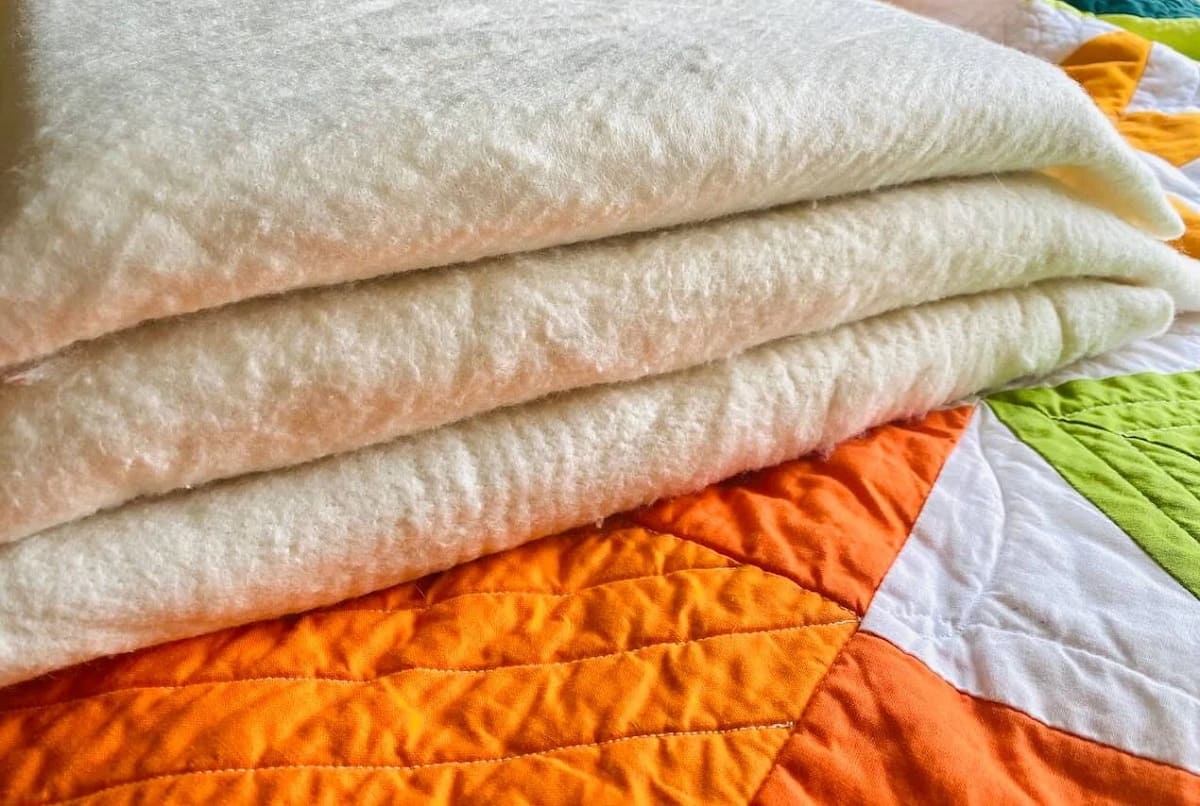
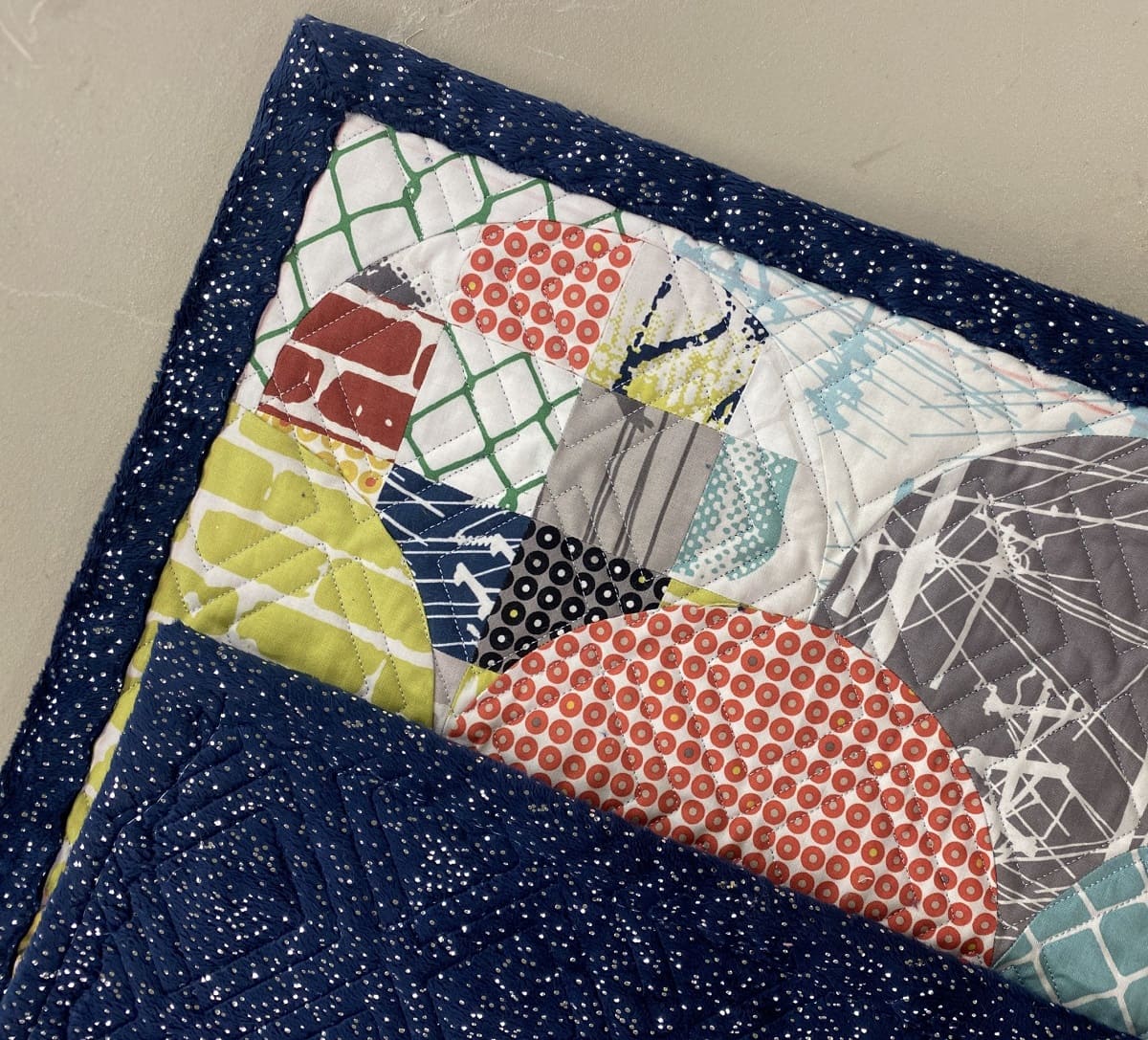
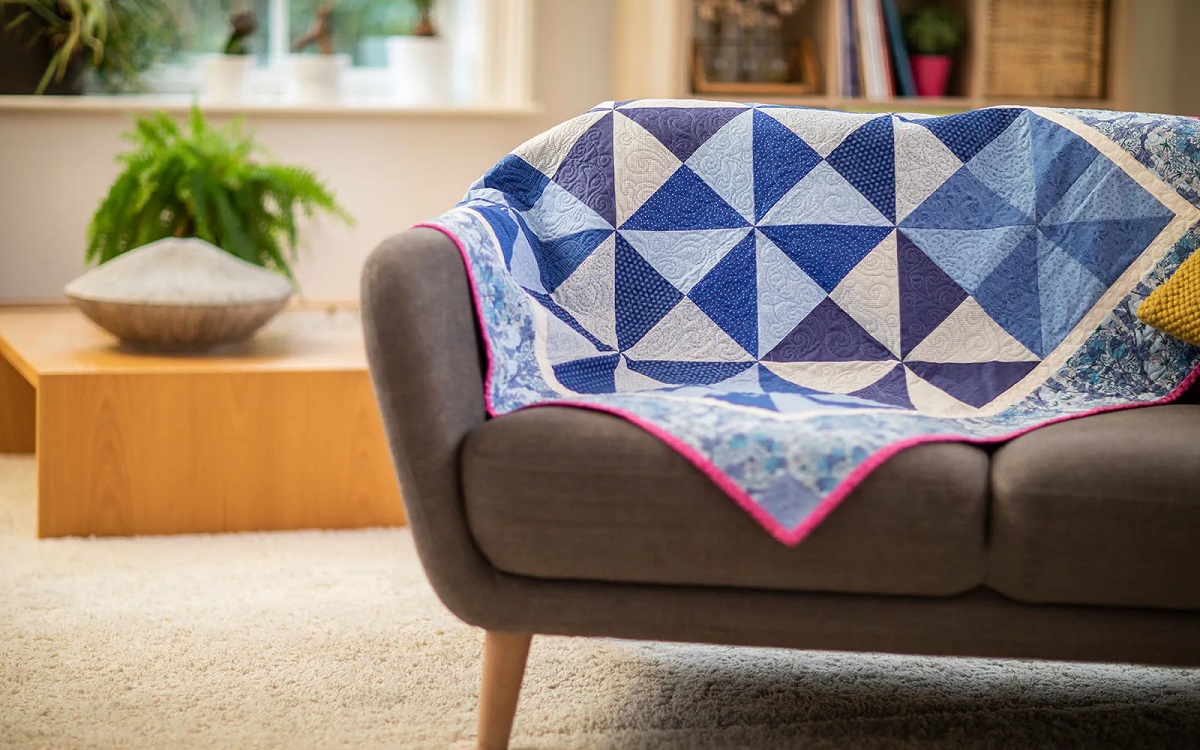
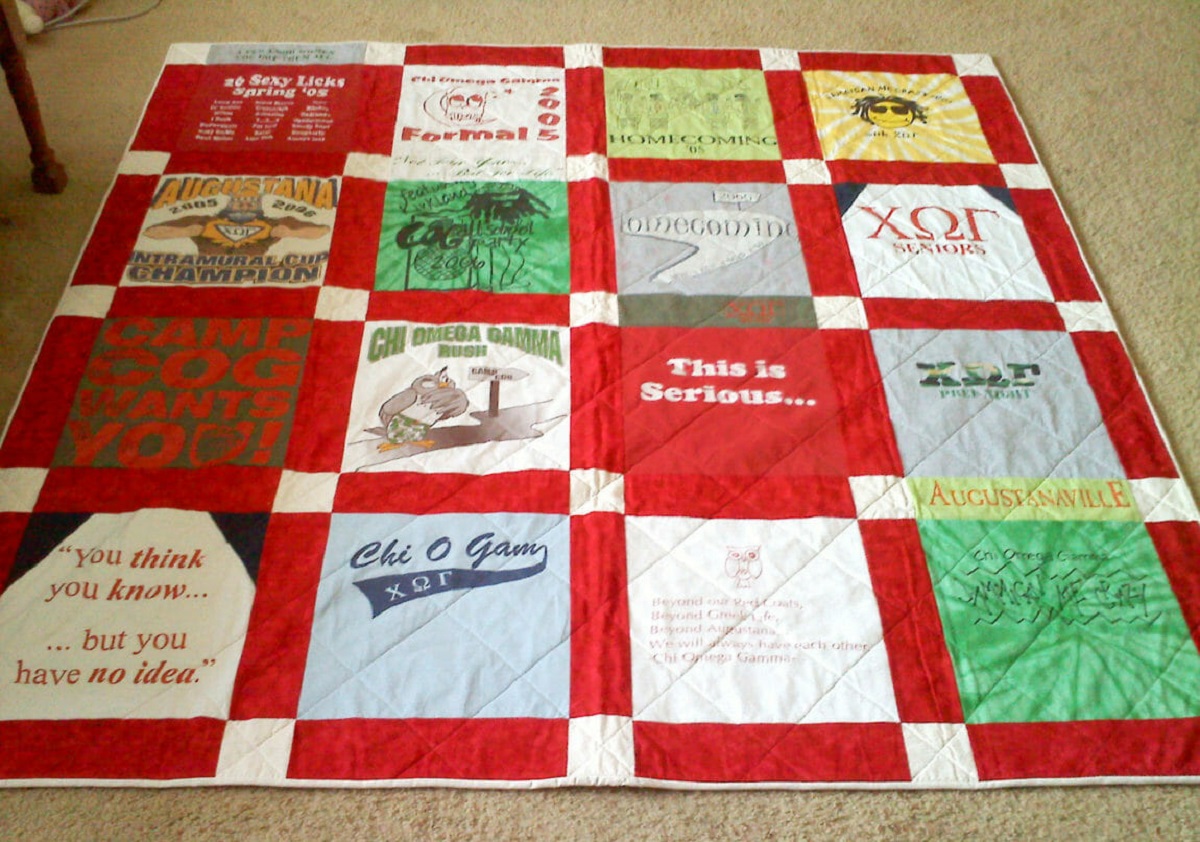
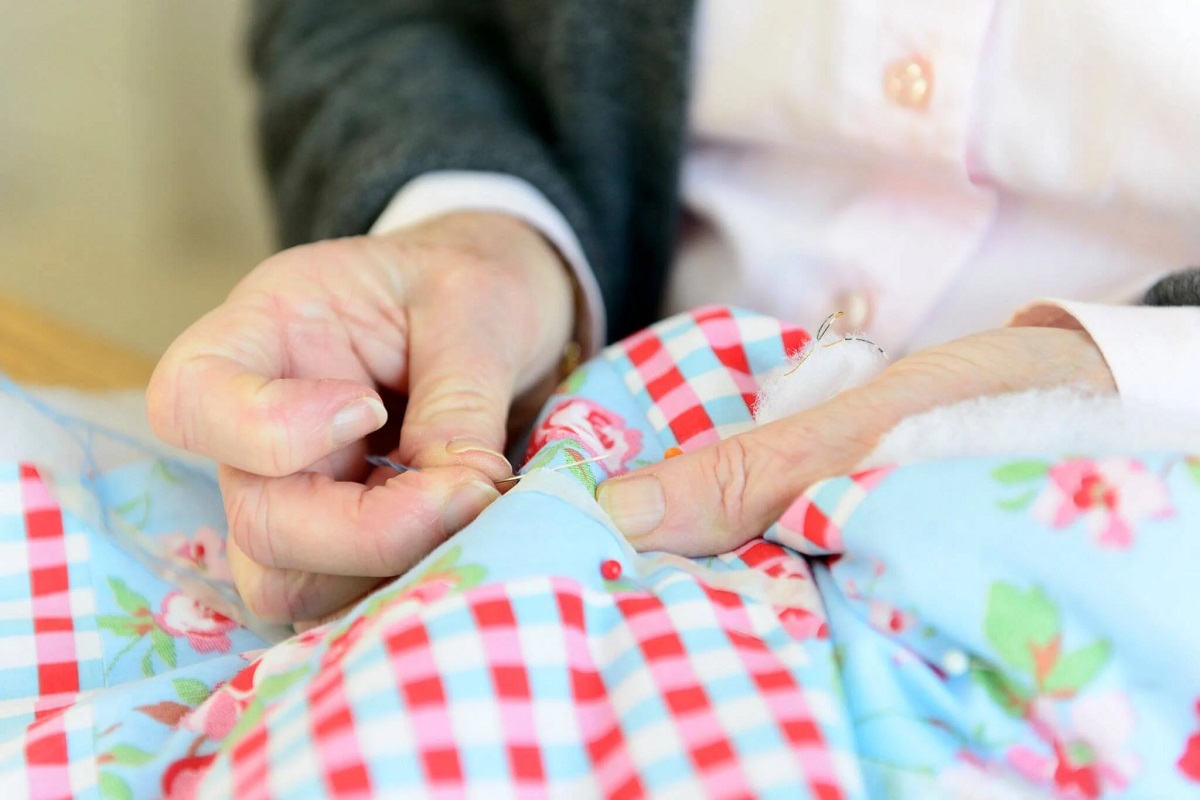
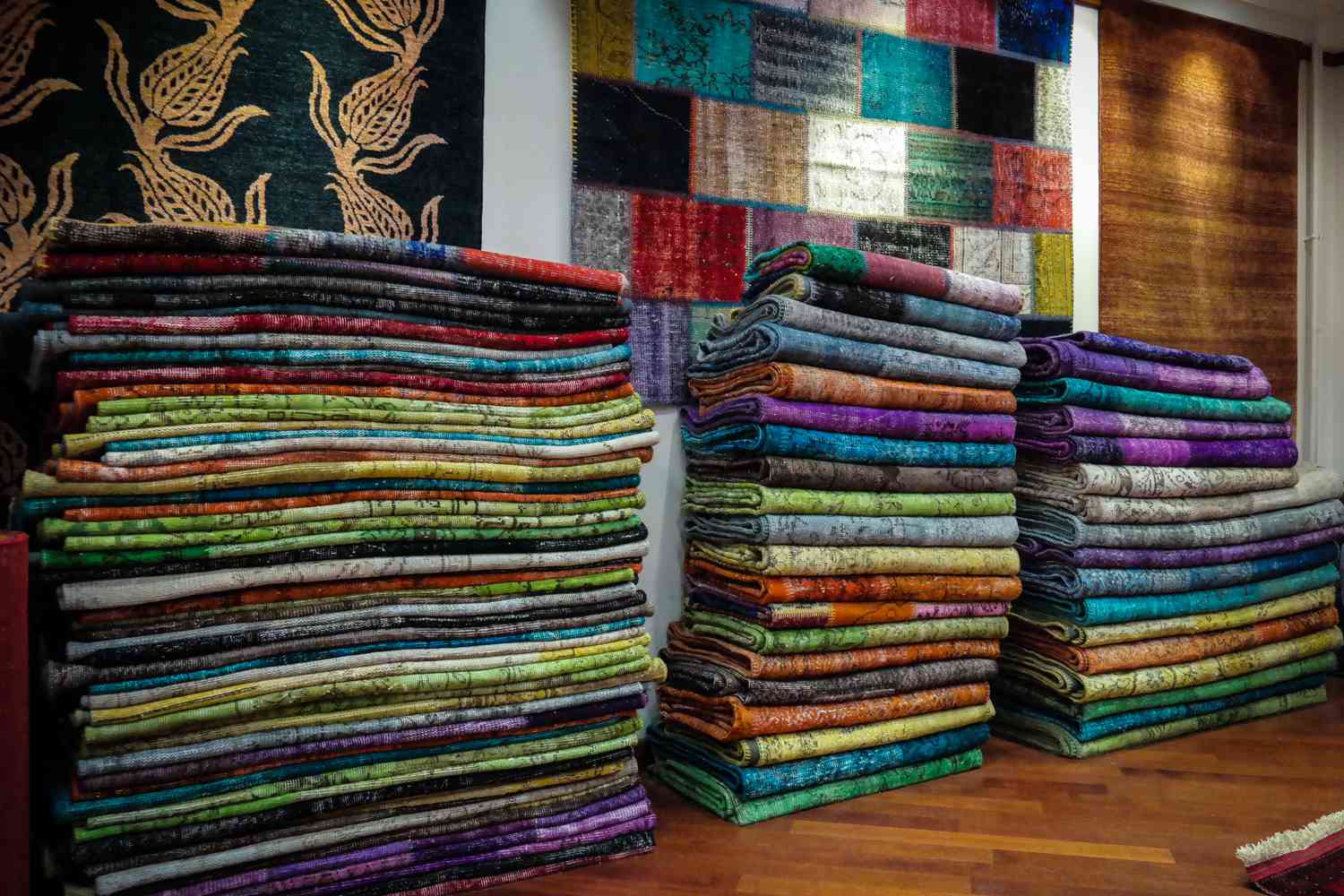
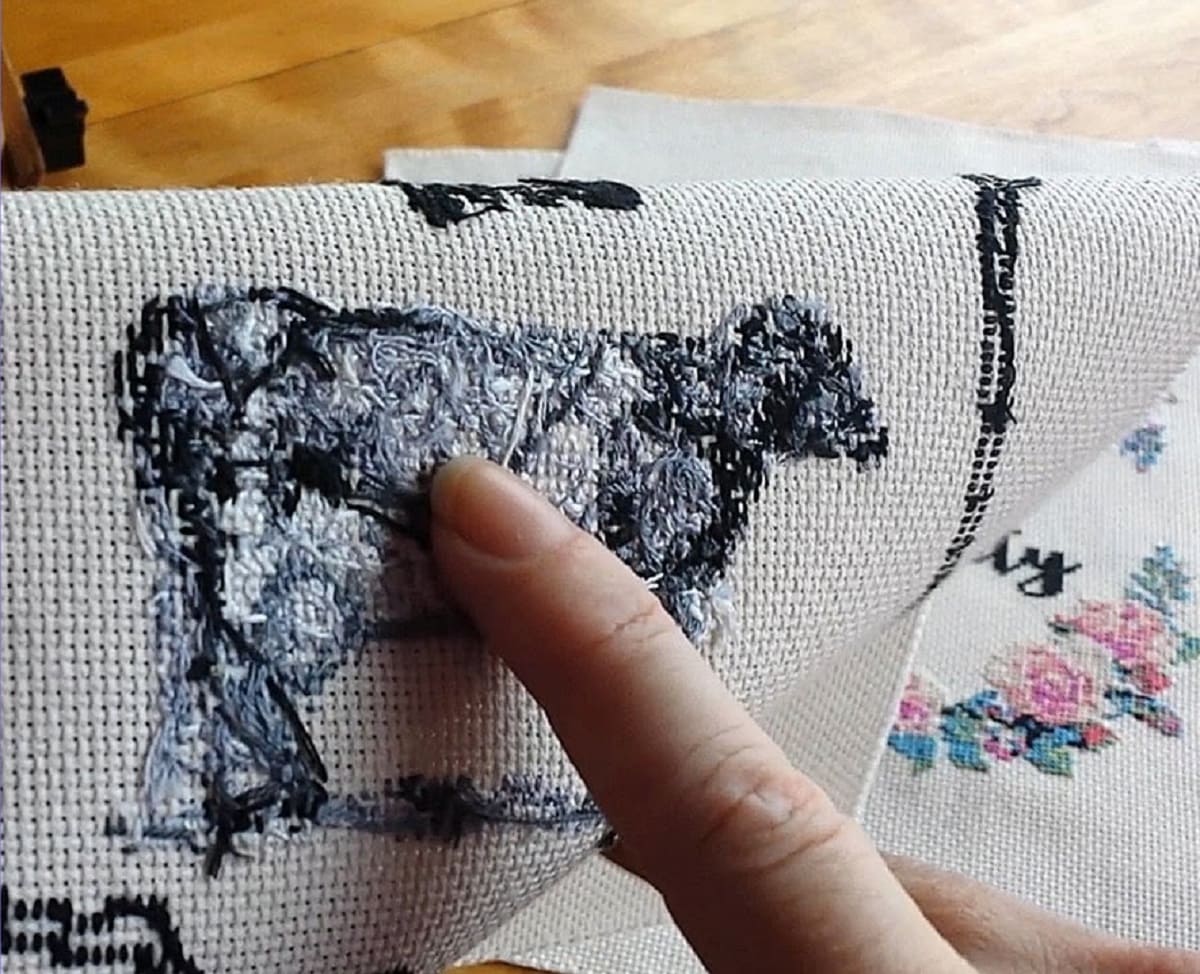
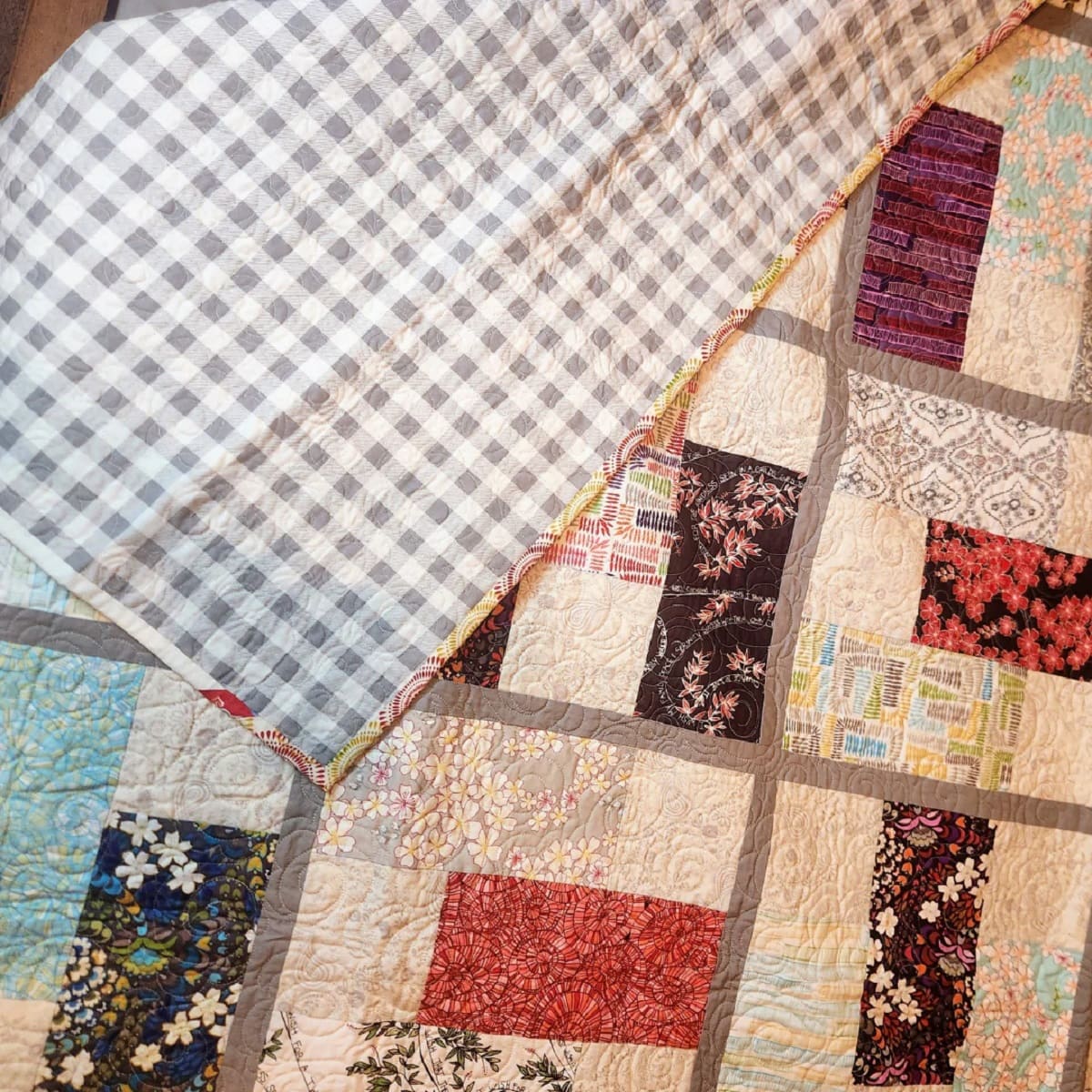
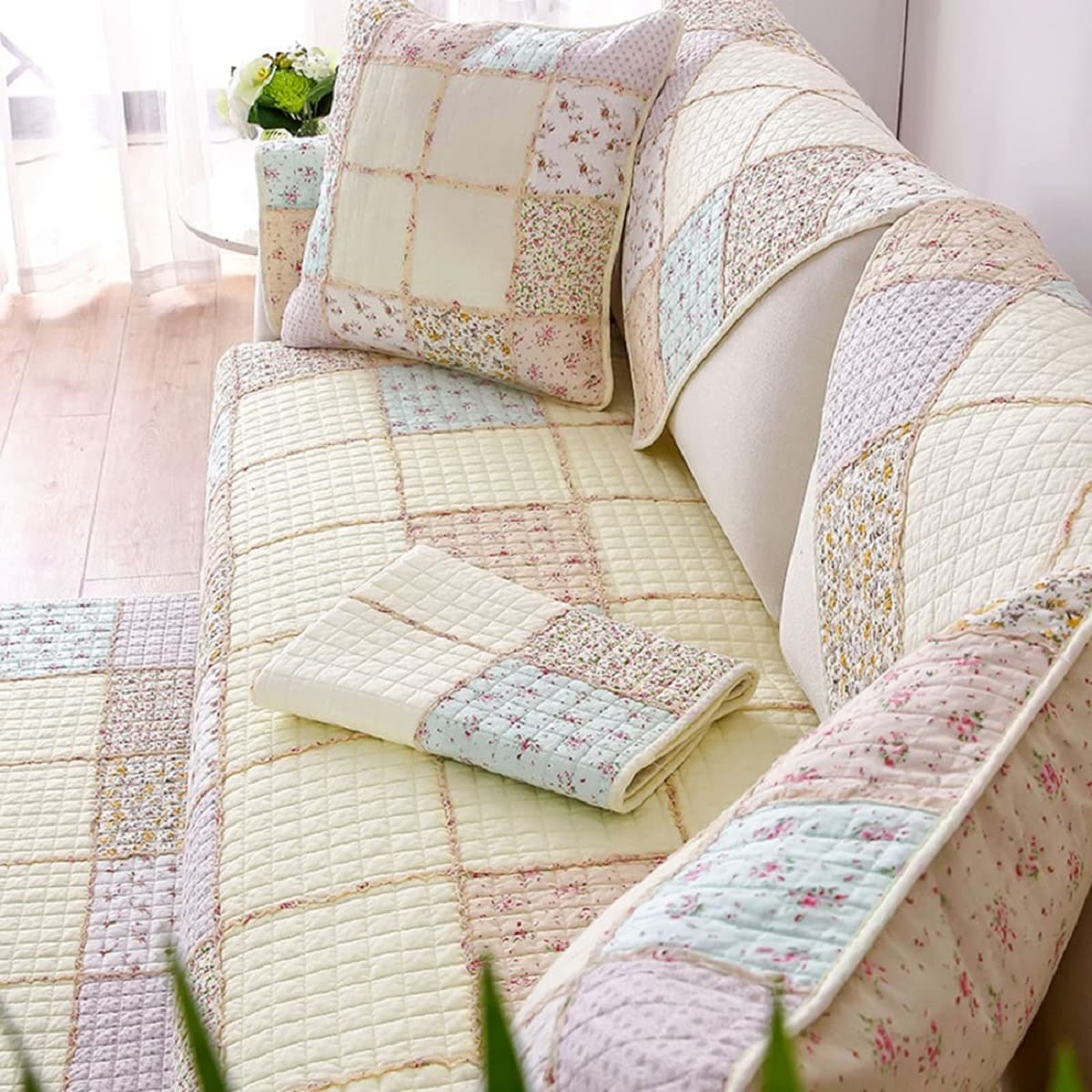

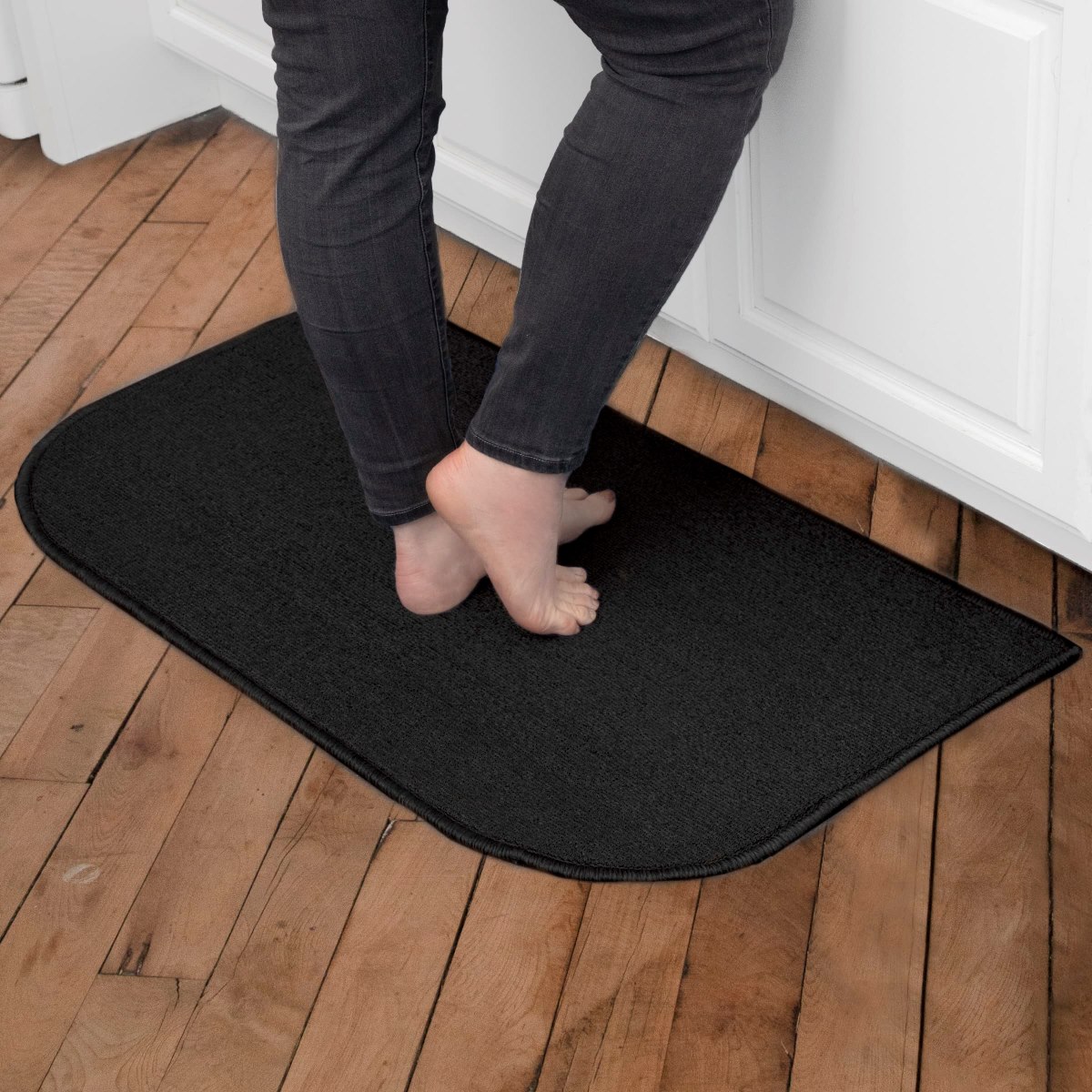
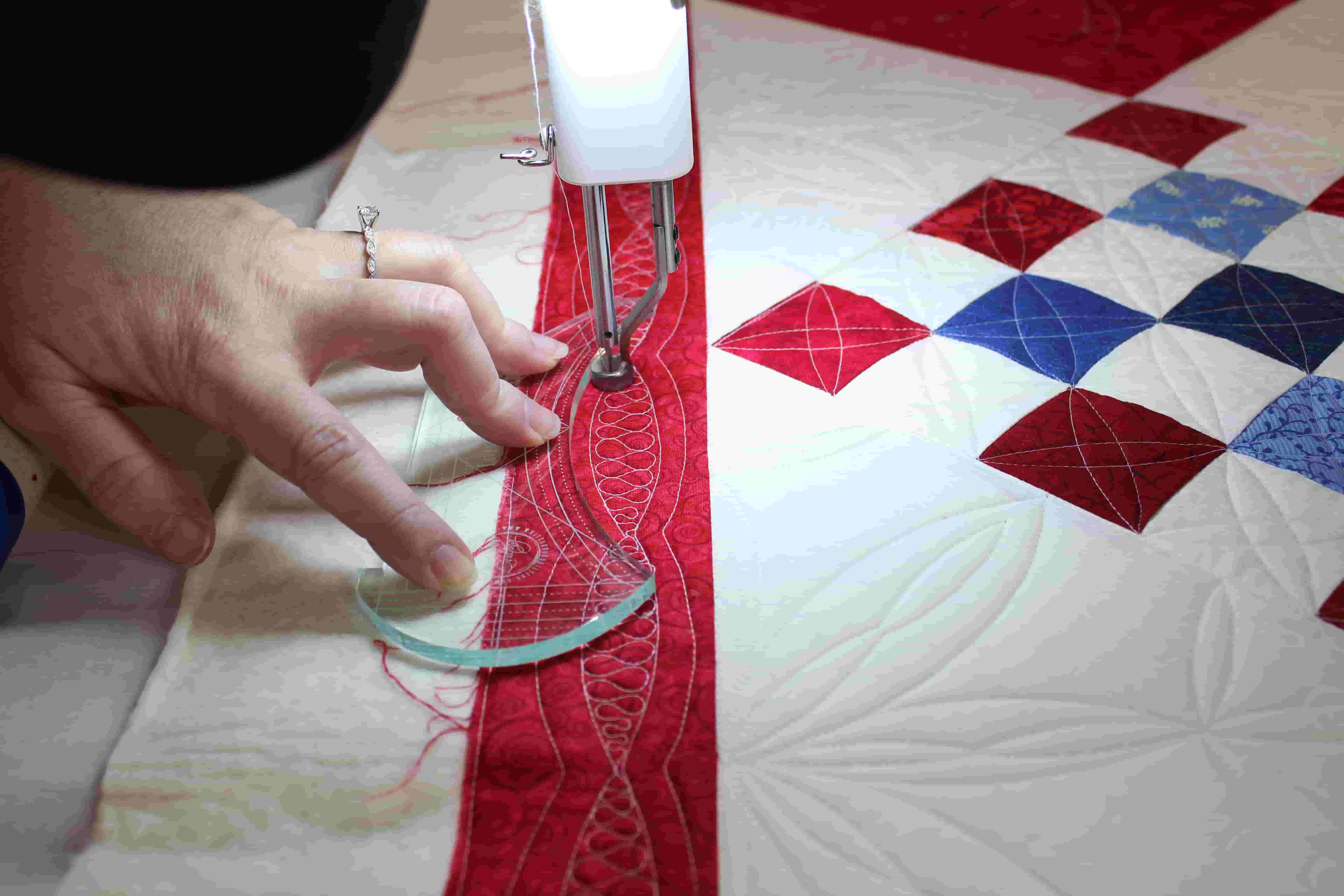
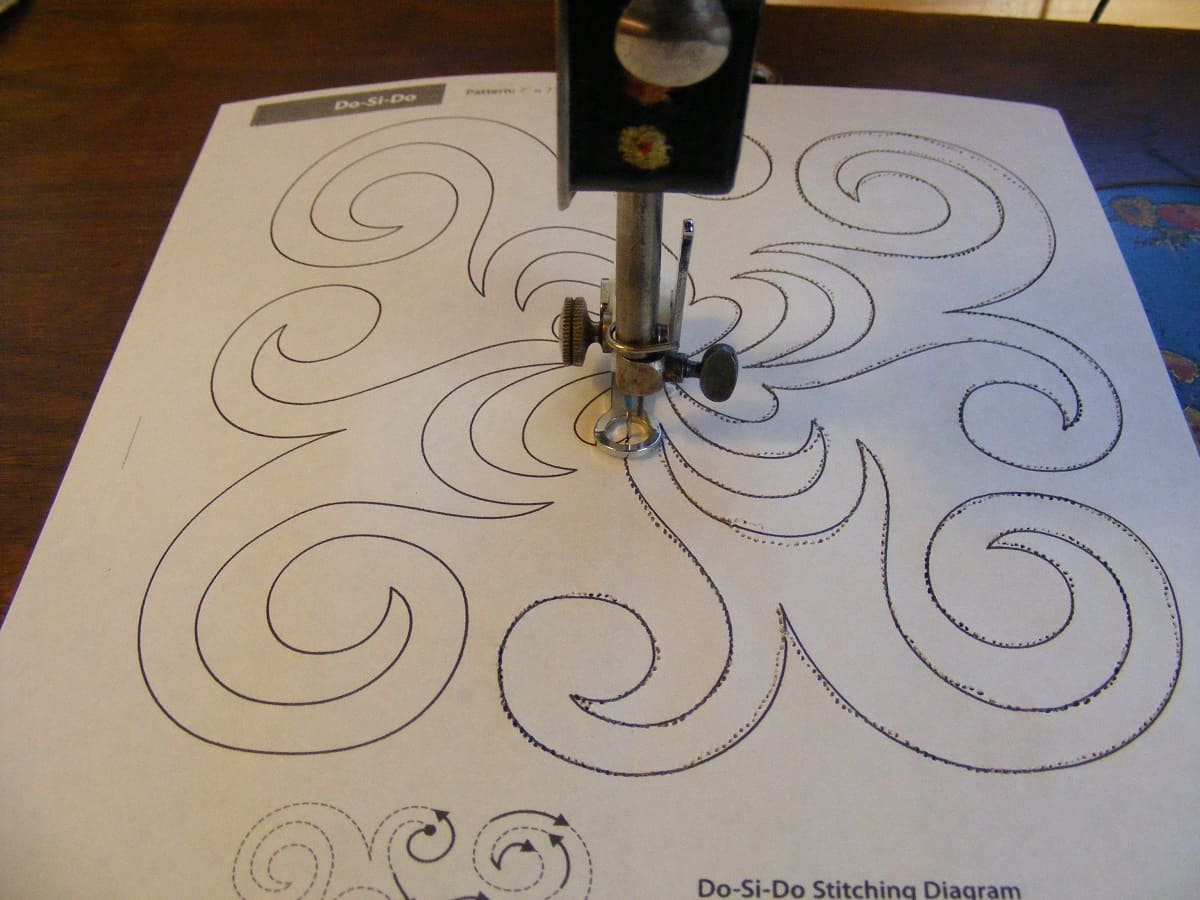

0 thoughts on “What To Use For Quilt Backing”